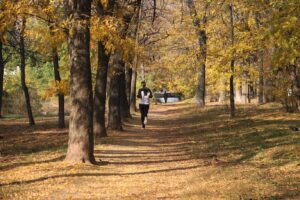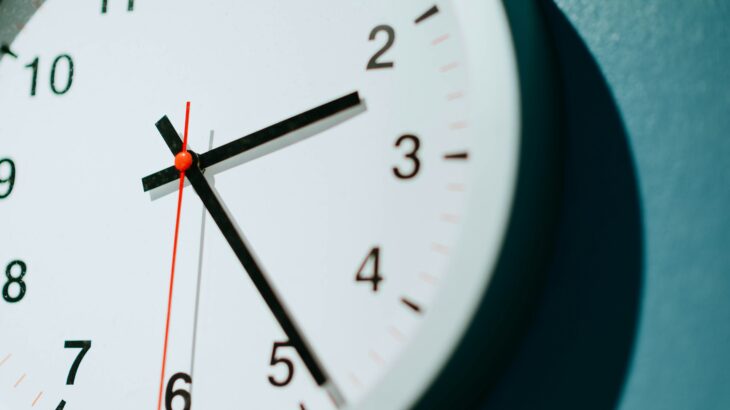By Amanda Scanga, Science in Society editor
The beginning of daylight savings time (DST) can be encouraging for some as it promises that spring and warmer weather are near. While most of us shift to DST with little effort, there are quite a few who struggle to make the change.
The changing number of daylight hours
An Earth day is 24 hours long or the length of time it takes the planet to rotate once on its axis. The number of daylight hours per day changes throughout the year due to the Earth’s orbit around the sun, and the tilt of its axis. In the Northern hemisphere, we cycle from the minimum hours of sunlight (winter solstice—December) to the maximum hours of daily sunlight (summer solstice—June) and back again during one solar year—the time it takes for the planet to revolve once around the sun, approximately 365 days.
Daylight savings time
DST is the practice of “leaping ahead” one hour in the Spring and “falling” back one hour in the Fall. It was first proposed in 1895 and adopted by Germany in 1915, during World War I, to reduce the use of artificial light to preserve resources. Many European countries quickly followed suit. The Canadian government mandated DST in 1918 to increase production during the war and save energy; by gaining an hour of light in the evening, there would be a reduction in the amount of artificial lighting needed then. Today, we know that there is no major benefit from an energy standpoint.
Many countries discontinued DST after WWI but reinstituted it again during WWII. Canada and the USA had year-round DST during the war years.
Since 1987, time zones and the use of DST have been regulated by Canadian provincial, territorial, and municipal governments. From 1988 to 2006, the North American standard for DST was one hour forward on the first Sunday in April and one hour back on the last Sunday of October. This changed in 2007, when legislation in the US changed the standard to the second Sunday in March.
Today, Yukon, most of Saskatchewan, and some regions of Quebec and British Columbia do not use DST. Many countries who once practiced DST no longer do so, and the European Union is also considering discontinuing it.
Our natural internal clock

Sleep is crucial for proper cognitive function for humans and animals alike! Photo by Kate Stone Matheson on Unsplash.
Our biological clock is our natural internal timing device. It is made of proteins that interact with our cells and control the function of most organs in our body. The “master clock”, called the suprachiasmatic nucleus, is the region of the hypothalamus that coordinates the biological clock. The master clock receives signals from the retina—in other words, it responds to light.
Using these light signals, our biological clock regulates our circadian rhythms, a 24-hour cycle. Our circadian rhythms regulate our sleep and emotions, and control many important functions including when hormones are released, our eating and digestive patterns, and our body temperature. Factors that desynchronize our light–dark cycle, like shift work or artificial light after dark, can lead to sleep disorders and other health conditions such as diabetes, depression, and seasonal affective disorder.
Daylight saving time’s effect on your health
In an interview with the National Post, Anya McLaren-Barnett, a pediatric respirologist and sleep medicine specialist at McMaster University explains that “…when we shift into daylight savings (when clocks are moved ahead an hour to inject more light into evenings), we’re trying to artificially change our (internal, biological) clock.” This is not an easy feat from a physical and mental health perspective. “Springing forward” leads to an increase in car accidents, heart attacks and sleep deprivation in the days or weeks after the switch to DST. This is due to the hour of sleep that is “lost” during the night when we make the switch. A US study showed an 18.7% decrease in the likelihood of individuals reporting that they feel rested in the week following the transition to DST, emphasizing the lingering impact of this time change on sleep health.
Returning to standard time is no simpler from a biological standpoint. In areas where there are fewer daylight hours as winter nears, the abrupt change can be especially difficult. Author Tristin Hopper describes the end of DST in Canada as “…tak[ing] a slow darkening process and transform[ing] it into a violent, one-day plunge.” In fact, one study showed that the rate of depressive episodes increased by 11% in the weeks after the clocks shifted back to standard time. The authors suggest this increase may be due to distress caused by the sudden advancement of sunset. Fortunately, on the night when we revert to standard time, we can get an extra hour of sleep, so, for some, there is not the same level of sleep disruption as when DST begins in the spring.
How do we combat the negative effects of daylight saving time?

Exercising regularly can improve sleep quality and exercising early in the morning can lead to more consolidated sleep overall by reducing the number of awakenings during the night. Photo by Ekaterina Novitskaya on Unsplash.
To better adjust to the time change to and from DST, it is important to maintain a regular sleep schedule in the weeks leading up to the time change. When going from standard time to DST, it may be beneficial to try to adjust your sleep and wake times by 15 to 30 minutes in the weeks leading up to the time change to give your body time to adjust. You should also make sure to get some morning light to preserve your circadian rhythm. Using a light box that emits white light can help with this. Exercising in the morning can protect your internal clock, as exercise increases body temperature, increasing wakefulness. If you are feeling unusually tired in the days following the time change, scheduling 20 to 30-minute midday naps can be helpful. Finally, be mindful of caffeine and alcohol consumption in the days after DST ends to prevent poor sleep quality, as these substances can disturb sleep.
DST is a fact of our man-made world. While it is just an annoyance for most of us, it can have adverse mental and physical effects for others. Some scientists and sleep specialists have encouraged the provincial governments to abolish DST because of the associated health risks, without success. So, for the time being, DST is a fact of life for most Canadians. If you are one of those people who have trouble coping with this twice a year ritual, do what you can to prepare yourself to “spring forward” and “fall back.”
Banner image: photo by Chuttersnap on Unsplash.




